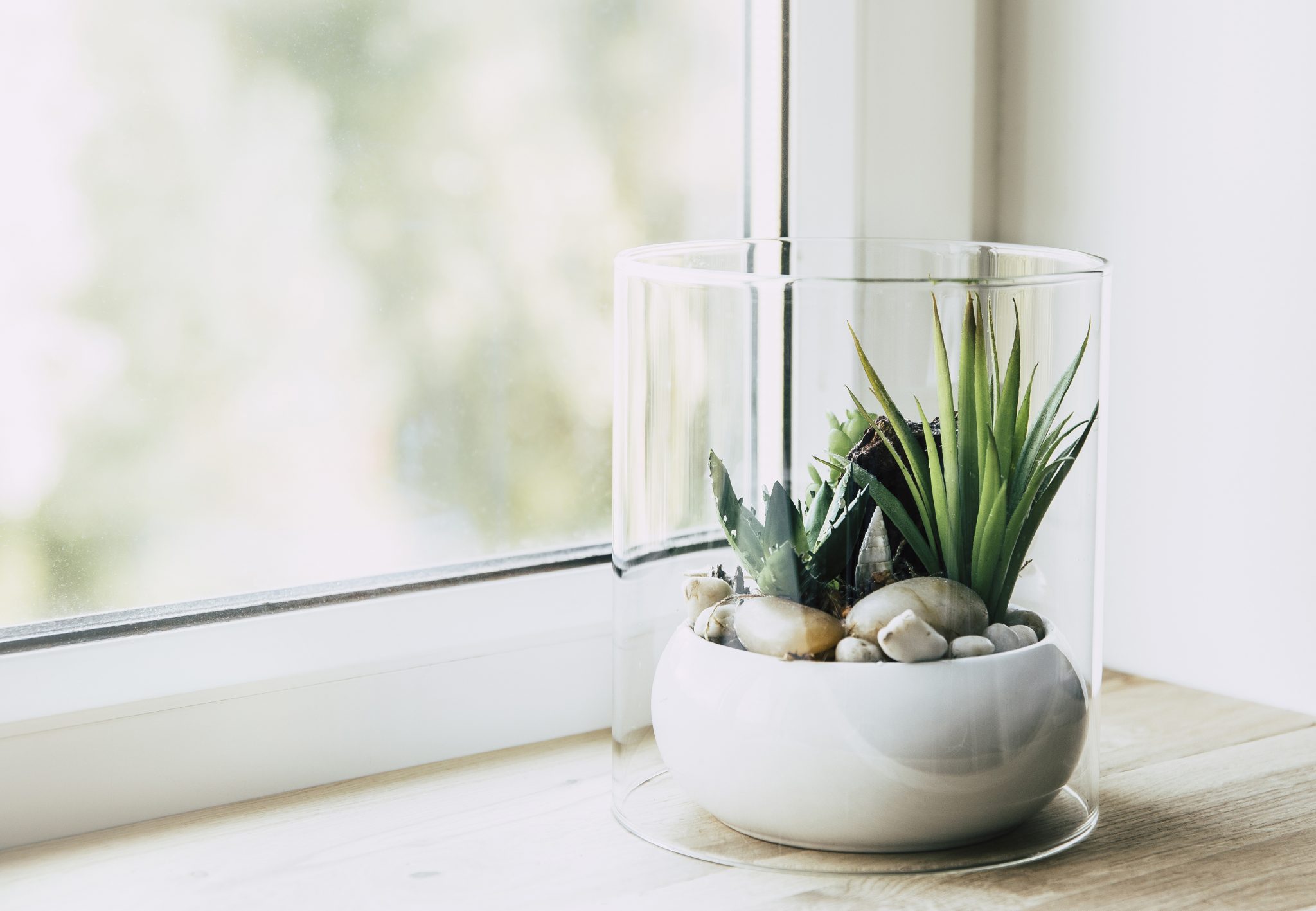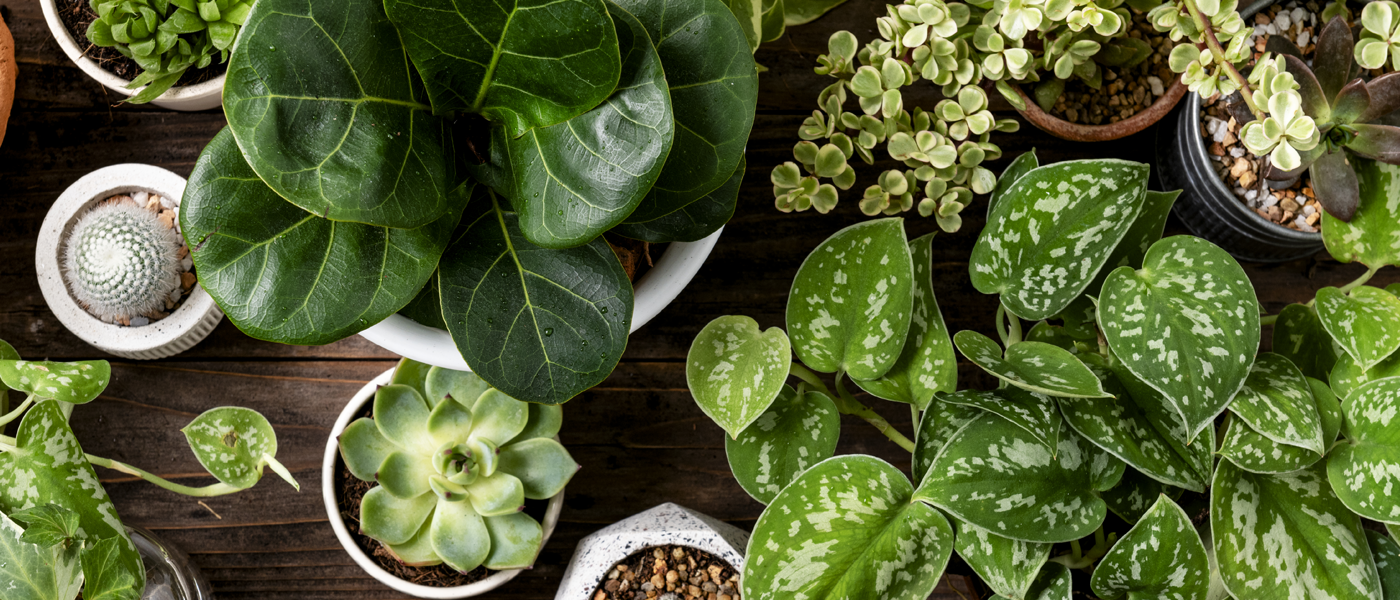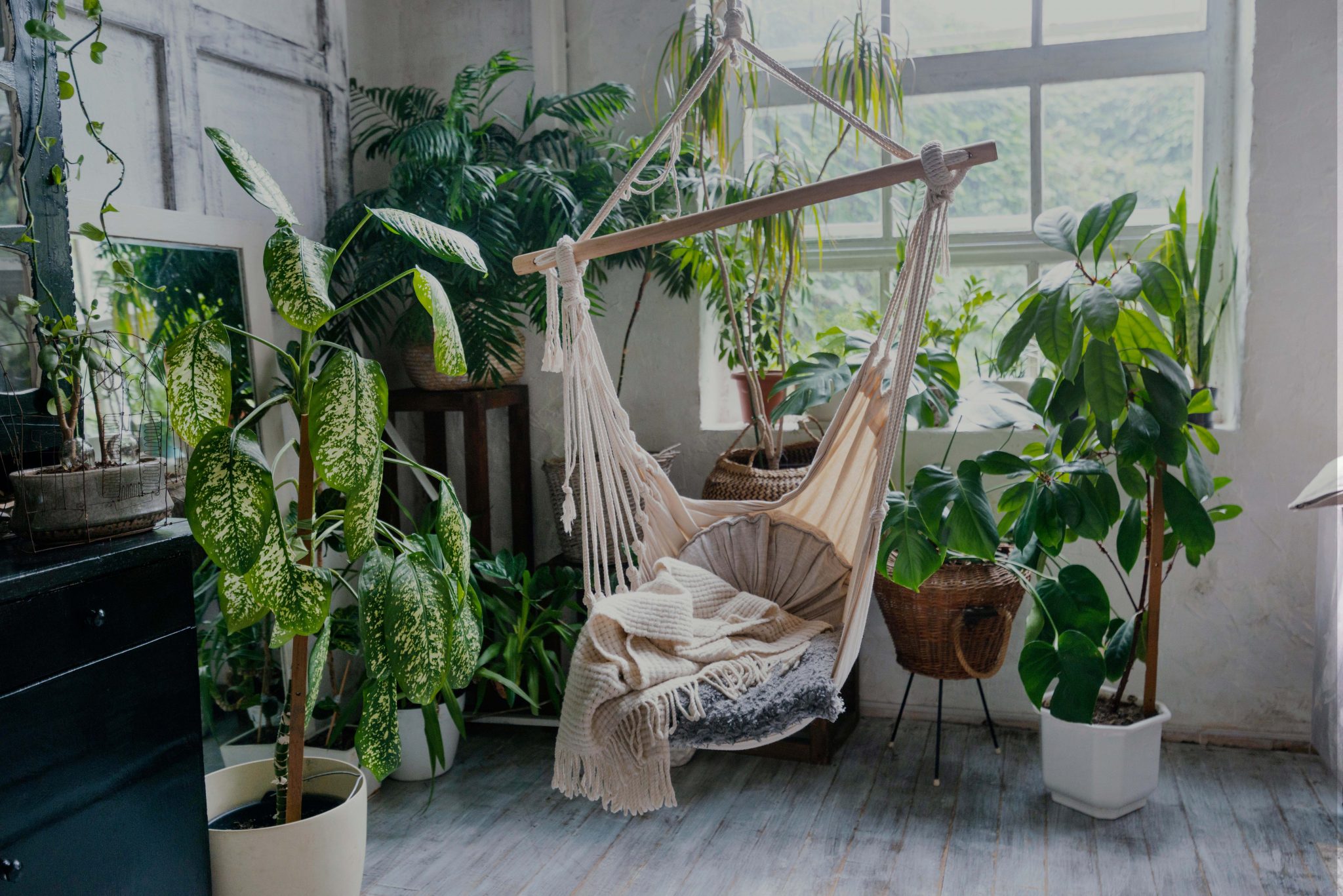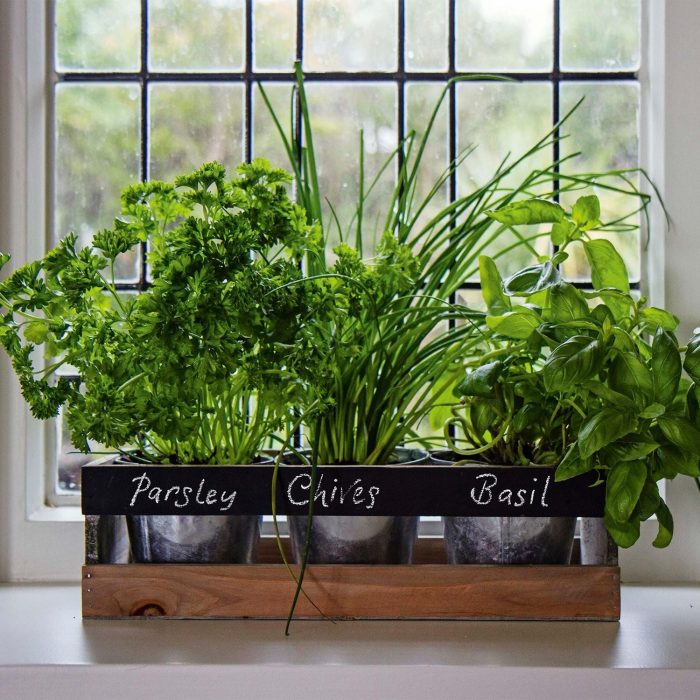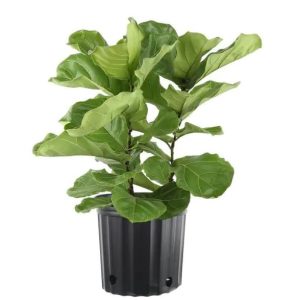There’s no better houseplant for the kitchen than one that will help you cook! You have lots to choose from, as there are plenty of herbs that can be enjoyed indoors year-round. The kitchen is often humid due to hot cooking appliances and therefore plants need to be able to withstand high temperatures.
Herbs – full sun, water when dry (every few days)
Ferns – moderate to low indirect light, water weekly, high humidity
Air plants – bright to moderate indirect light, daily spraying
English Ivy – A lush, green plant that’s perfect for hanging over your sink or by a window.
Aluminum – Another plant that is easy to care for, the aluminum plant’s main appeal in the kitchen is its coloring. And the fact that it’s a good hanging plant means you’ll save valuable counter space.
Pothos – These things were basically designed to dangle from cabinets and shelving while adding a splash of color.
Anthurium – Give it a bright window for the most blooms. Otherwise, medium light yields healthy green leaves with fewer flowers.
Thanksgiving, Easter, or Christmas Cactus – Small pots of this no-fuss plant fit easily on shelves in any room of the house, adding a sizzling spot of color. Water it when soil feels dry to the touch.
Croton – Croton stages a year-round show with leaves in energizing shades, including green, gold, red and pink. Plants serve up the strongest hues when they receive bright light.
